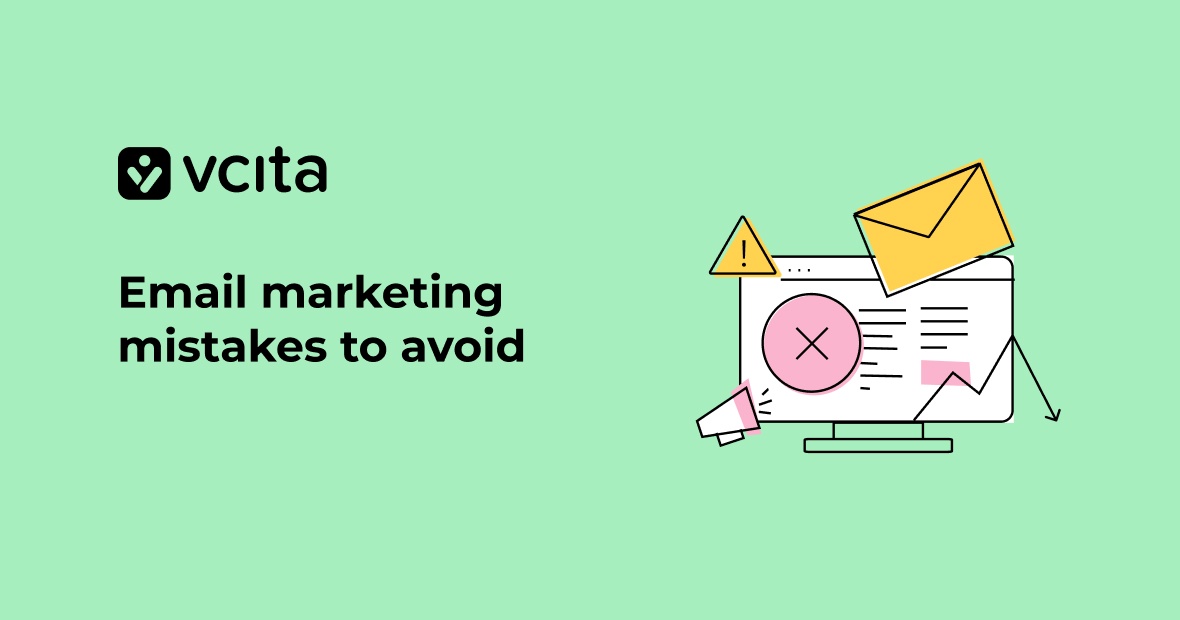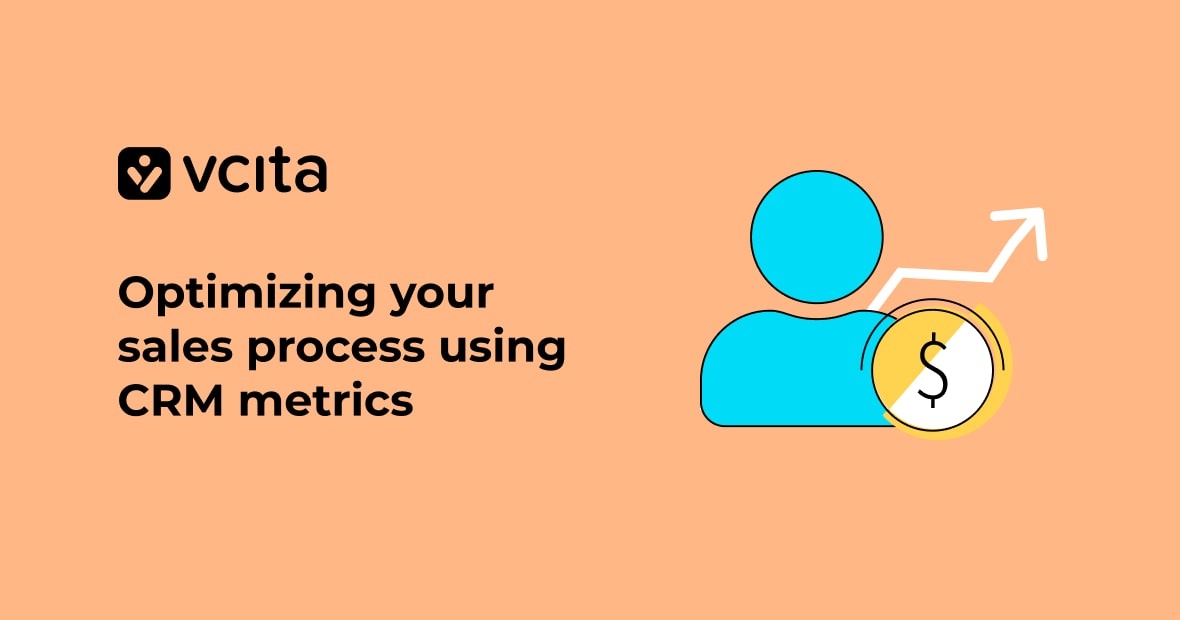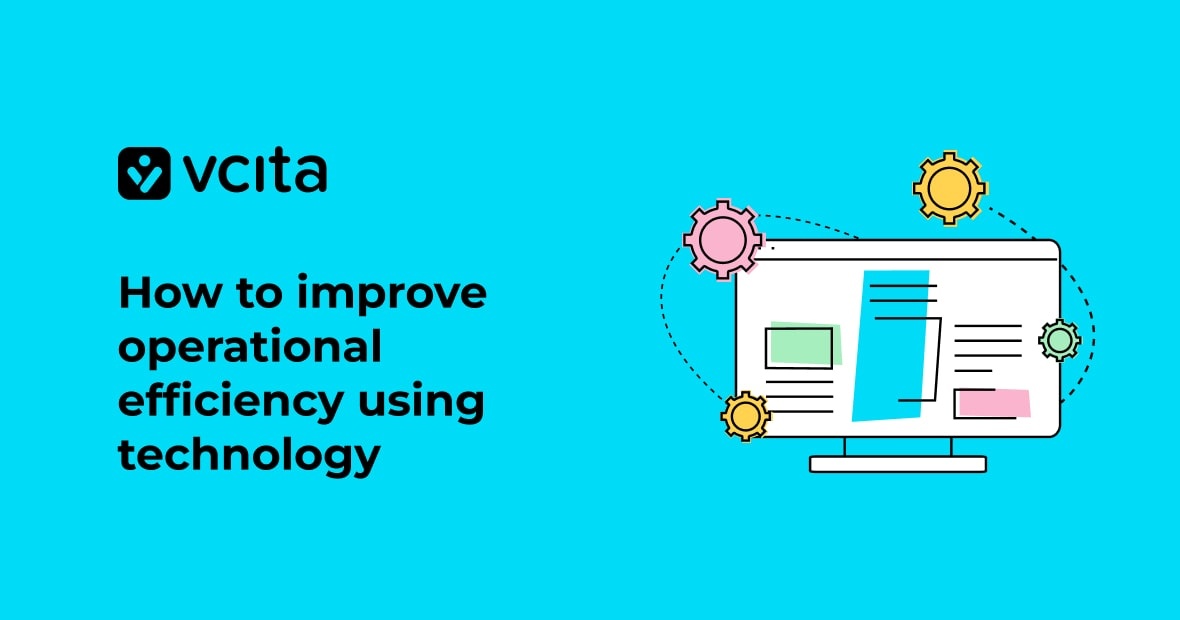Have you ever spent hours crafting the perfect marketing email, only to have it land with a thud in subscribers’ inboxes? We’ve all been there, and we know how much it hurts. You might pour your heart and soul into connecting with your customers, but email marketing mistakes can undermine your hard work.
Sending emails at the wrong time, using broken links, boring subject lines, or unclear calls to action, and forgetting to segment email messaging are common email marketing mistakes that tank open and click through rates. The good news is that you can avoid these errors and see your email marketing strategy drive success for every campaign.
Keep reading to make sure your subscribers actually open and click through the next email you send.
Sending emails at the wrong time
Most small business owners don’t realize that the days and times you send your marketing emails can significantly impact whether people open and engage with them. After all, the average open rate for emails is only 21.33%, and the average click-through rate is just 2.72%. Unless you get the timing right, you could be seeing rates significantly lower than average.
Get your email timing right
To beat these averages, avoid sending campaigns on Saturday mornings or Sunday nights. Open and click-through rates are lowest on weekends, especially Saturdays, when people are less likely to check their inboxes or have time to read your email.
Instead, aim for Tuesday through Thursday between 9 AM and 3 PM. These times and days typically see the highest open and click-through rates, because people are settling into their workday, checking emails, and more receptive to reading and taking action on the messages in their inboxes.
Test and track engagement rates
The thing about averages is that they are just that — averages. They don’t tell you the best timing for your specific audience. The only way to know for sure what works best for your particular email list and business is to test different days and times, and monitor the results.
Try sending half your list an email on Tuesday morning, and the other half on Saturday afternoon. Compare the open and click-through rates to see which time period results in better engagement, then use that data to plan future email marketing campaigns.
Broken links and missing alt text
One of the biggest email marketing mistakes small business owners make is including broken links or forgetting alt text in their email campaigns.
The irritation of broken links
Broken links are links that don’t work for some reason, like the page was moved or deleted, or you made a minor typo when you added the link. It’s frustrating to click a broken link, and it ruins user experience. It also hurts your open and click through rates, causing your email marketing metrics to suffer.
To avoid using broken links, double check that all links in your email work before sending. Also, consider using a link checker tool to scan for and fix any broken links.
The frustration of missing alt text
Another common mistake is forgetting to add alt text to images in your emails. Alt text is the text that appears when an image won’t load for some reason. It provides context for the image so subscribers still get the message.
Without alt text, your subscribers are left with gaps in the content and a poor user experience if images are disabled or won’t load for any reason. To add alt text, go into the code for your email and add the alt attribute to all tags, describing the image for context.
By avoiding these two common email marketing mistakes, you’ll provide a much better experience for your subscribers. They’ll appreciate your attention to detail, continue engaging with your content, and stay on your email list, which is the goal of any successful email marketing strategy.
Vague subject lines
If recipients can’t determine what your email is about from the subject line, the odds of them opening and reading your email drop significantly. This makes it imperative to keep subject lines appealing and very clear. Here are some tips to make sure your subject lines pass the open test.
Keep subject lines short and descriptive
Subject lines of under 50 characters tend to have the highest open rates. Aim for a subject line that gives readers a quick hint about your email’s content or purpose. For example, “New Product Launch!” or “25% Off Spring Sale!” are short but compelling subject lines.
Avoid overly broad subject lines like “Important Update” or “Monthly Newsletter.” These don’t give readers a reason to open your email. Similarly, avoid cryptic subject lines that don’t relate to your business or industry.
Match the subject line to the email content
Make sure your email content aligns with the promise made in the subject line. If readers open your email expecting details on a new product launch or sale, but the content is a generic newsletter, they will feel misled. This damages your credibility and trustworthiness, leading readers to ignore future emails.
Test different subject lines
Use A/B testing to determine which subject lines resonate most with your readers. For example, send half your list an email with the subject “25% Off Your Next Order!” and the other half the same email with the subject “Huge Savings Inside!” A/B testing has been found to drive 28% higher ROI, so track open and click-through rates to see which email was more compelling, and apply these insights to optimize future subject lines.
Failing to segment your email list
When you send the same email to your entire list, you diminish engagement and hurt your open and click through rates. Segmenting your email list into smaller, targeted groups allows you to send the right message to the right people at the right time, which improves engagement and ensures more personalized communication. For example, don’t send an email announcing a sale on women’s clothing to men on your list.
Segment by gender, location, purchase history, and more. You should also use email engagement metrics such as open and click through rates to understand how to best segment your email lists. If certain segments of your list have higher open or click through rates, focus your messaging on those groups. You’ll get a higher return on investment.
Forgetting a strong call to action
Without a clear call to action, or CTA, your readers won’t know what you want them to do next or how to engage further with your business. This results in lower click through rates, which hurts your email marketing strategy. Here are top tips for improving your CTAs.
-
Make your CTA clear
When crafting your marketing emails, be sure to include an obvious call to action that tells your readers exactly what you want them to do. Weak language like “Check it out!” or “Learn more” is too vague and won’t drive many conversions. On the other hand, a specific CTA like “Sign up for a free trial today!” or “Register now and save 25%!” gives readers a concrete next step.
-
Ensure your CTA is easy to spot
Keep your CTA highly visible by placing it prominently at the top and bottom of your email. You can also use action buttons, bold text, or contrasting colors to make it stand out. Only include one or two CTAs per email so you don’t overwhelm your readers or make them unsure of which action is most important.
-
Monitor and refine your CTAs
Once your campaign is live, track how people are interacting with your CTA. Check your email analytics to see open and click through rates for each CTA option. Look for any differences between mobile and desktop, A/B test different CTAs or placements, and make changes as needed to optimize engagement. Little improvements to your calls to action can have a big impact on your email marketing success.
Turn your emails into marketing magic
Learn from your email marketing mistakes and use that knowledge to strengthen your future campaigns. Pay close attention to details like optimized subject lines, strategic send times, working links, and CTAs that get people to open your email and actually take the action you want them to. Small tweaks and consistent testing will help you avoid common errors, optimize your email strategy, and engage your list with relevant, value-added emails. You’ll boost your open and click through rates in no time and see increased conversions and sales that help your business grow.




























